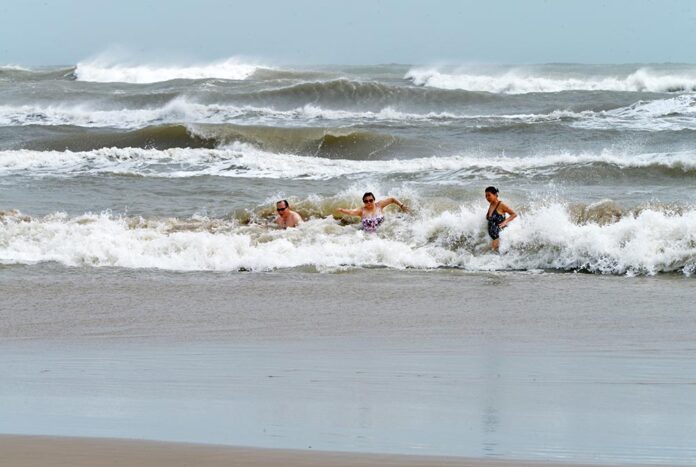It’s no secret that the Rio Grande Valley is the terminal point of the Atlantic tropical storm corridor. As such, many Valley residents are confident that they know how to handle a storm when it approaches.
Maybe they’re a little too confident.
Tropical Storm Nicholas, which formed in the Gulf of Mexico over the weekend, is just the latest storm to deal a blow to our collective hubris; it certainly isn’t the first.
Fortunately, the storm’s center remained off the coast. Most of the Valley endured rain but generally was spared damage from high winds.
Nicholas was an anomaly, forming off Mexico’s eastern coast. Most Atlantic storms are born off the western coast of Africa and cross the ocean before getting to our coastline, giving local residents days to monitor its progress and prepare themselves for heavy weather. Even Nicholas gave the Valley plenty of advance warning as it rolled up the coast from south of the border.
And yet, too many residents, and officials, seemed unprepared for its arrival.
In fact, it seems that every time a storm hits the areas, skies darken and leading-edge drizzles begin over long lines at gas stations and coin-op water dispensaries. People crowd local stores fighting over the last available batteries for their flashlights and radios — even though they had days to prepare for the storm. Lines of cars queue up to pick up sandbags to help protect their homes in this flood-prone area.
The scene Monday morning in southern Cameron County was a case in point. County and city workers began providing sandbags at the Brownsville Event Center at around 7 a.m.; the heaviest rains related to Nicholas swept through the city around 6:30. Moreover, the bags weren’t ready and manpower was insufficient; residents had to fill bags themselves, although local police officers and other volunteers stepped in to help. Some municipalities began distributing sandbags as late as 9, after most of the storm had passed.
Some local officials sought to defend themselves for the late distribution, citing the storm’s late formation and issuing reminders that this isn’t the first storm of the season, nor the first distribution of sandbags, and most residents already should have a supply if they need them.
There’s certainly truth in that defense. In a known storm corridor, however, officials should be better equipped to handle impending storms. They especially must be better able to mobilize personnel on weekends and holidays when most workers are off duty; storms, after all, don’t respect calendars.
Some forward-thinking cities made sandbags available when the summer storms season began in June, long before the first storm arose. Others should consider doing the same, perhaps as part of a hurricane-prep fair that invites residents to pick up sandbags and emergency information. Vendors could participate and offer everything from emergency supplies to storm insurance.
Most importantly, they’d be providing a reminder that the storm season is upon us and we must be prepared at all times, as a major storm could form at any time.
That seems to be what is most needed — proper storm planning, and recognition that the need is constant and can’t be cobbled together at the last minute.




